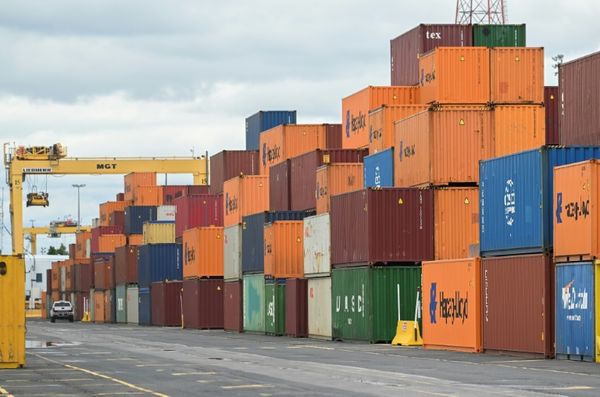
Electricity and gas company AGL Energy has posted a return to profit but rejected accusations the sector is price gouging cash-strapped households.
“We are acutely aware of the cost of living pressures both our customers and the broader community is under,” the chief executive, Damien Nicks, said on Thursday.
“We operate in a highly regulated environment and one of the most competitive markets around.”
Prof Allan Fels, a former anti-monopoly boss on Wednesday released research that cited electricity supply as a major contributor to inflation in an “insufficiently competitive” sector.
“Of great concern is price gouging in the electricity sector, a very concentrated industry at all levels,” the report said.
“As a possible example of market power, AGL data provides evidence of price discrimination against retail customers.”
The report said there was evidence the big three electricity retailers were overcharging households compared with business customers, saying that for AGL “for every consumer bill of $1,000 there is an apparent ‘excess charge’ of $205.61 relative to prices charged to large business customers and not accounted for by genuine price differences”.
And it identified an “apparent ‘excess charge’ $348.24 in every AGL consumer gas bill of $1,000”.
“AGL needs to explain why consumers are paying $60.10/Megawatt-hour more than seems to be justified by cost differentials,” Fels’ report said. “We would expect to see similar results in the other big retailers, Origin and EnergyAustralia, simply because the wholesale prices and network charges must be of similar magnitude.
However Nicks insisted it was a “very, very competitive market”.
“We have a large retail footprint but we compete with the likes of Origin Energy, Alinta,” he said.
AGL announced on Thursday a half-year net profit of $576m compared with a loss of $1.075bn a year ago amid an energy shock and the impending closure of the coal-fired Liddell power station.
Shares in AGL surged 13% or $1.04 to $9.02 in early trade as shareholders welcomed the solid results and interim dividend of 26 cents a share – more than triple that of a year earlier. By mid-afternoon, the gain had been pared to 84 cents, or 10.6%, to$8.82.
Underlying earnings before interest, tax, depreciation and amortisation rose to $1.07bn in the half, up 78%.
Revenue fell 20.8% to $6.18bn in the six months to 31 December, but the underlying profit of $399m was sharply higher than $87m a year earlier.
The increase was driven by fewer plant outages and more stable market conditions, offset by being caught on the wrong side of contracts as wholesale prices fell.
In line with a strong first-half, AGL pushed its FY24 guidance for underlying profit to the top of the guidance range at $680m to $780m.
Nicks said the strong operational and financial performance provided “headroom” for investment in the future business and energy transition.
“We’ve had a very strong six months, we’ve doubled the (development) pipeline and we are investing in the future of the energy transition,” he said.
AGL was responding to market pressure to exit coal-fired power generation over the next 12 years, Nicks said.
In the meantime, coal-fired power plants can “flex” in the middle of the day when solar energy is dominant and prices are low.
AGL’s chief financial officer, Gary Brown, said it was too early to comment on the price outlook for FY25.
He said AGL was well placed to deploy $3bn to $4bn by 2030 towards the transition of its energy generation portfolio, supported by strong cashflow and a larger and more diversified pool of capital.
AGL said wholesale energy prices were lower across all states after government coal and price cap schemes introduced in 2022 and increased availability of generation units.
Wholesale prices were also affected by seasonal mild weather, a lack of volatility and increasingly higher penetration of solar in the national electricity market.
AGL’s total fuel costs for gas and coal generation fell 28.6% in the first six months of FY24.







